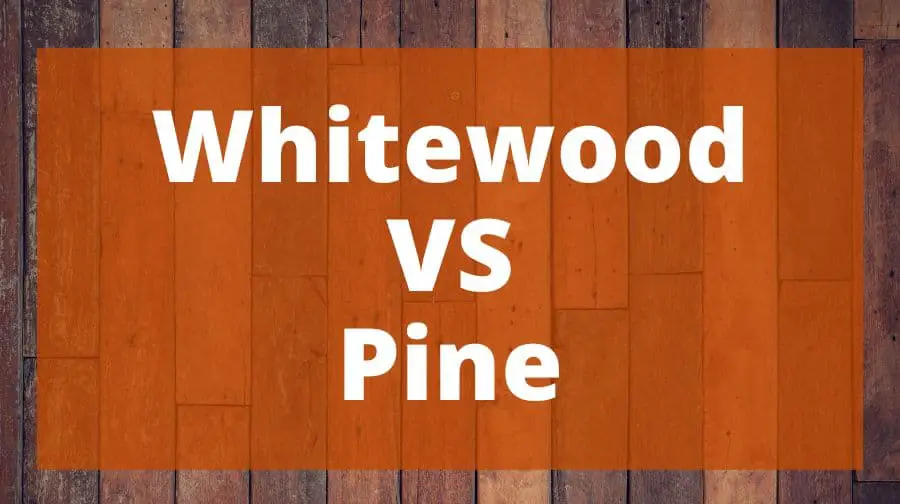
When it comes to wood, there are many options to choose from. Whitewood and pine are two of the most popular types of wood, but which one is better?
In this blog post, we will compare Whitewood vs Pine and help you decide which one is the best fit for your needs.
Both kinds of wood have their unique benefits and drawbacks, so read on to learn more!
What Is Pine Wood?
Pine wood is a type of softwood that comes from evergreen trees belonging to the genus Pinus. There are around 115 different species of pine, and they’re found in locations all over the world, including North America, Europe, Asia, and Africa.
It is generally light in color, ranging from pale yellow to reddish brown. It’s also relatively soft compared to other types of wood, which makes it an easy wood to work with. However, pine is also a bit brittle, so it’s not the best choice for furniture that will see a lot of wear and tear.
One of the most popular species of pine is lodgepole pine (Pinus contorta), which is native to the western United States. Lodgepole pine gets its name from the fact that it’s often used to create lodgepole-style fences, which are made by driving long poles into the ground and then stacking shorter logs horizontally between them.
If you’re looking for a sturdy piece of furniture made from pine, look for one that’s made from lodgepole pine. This type of pine is known for being especially strong and durable.
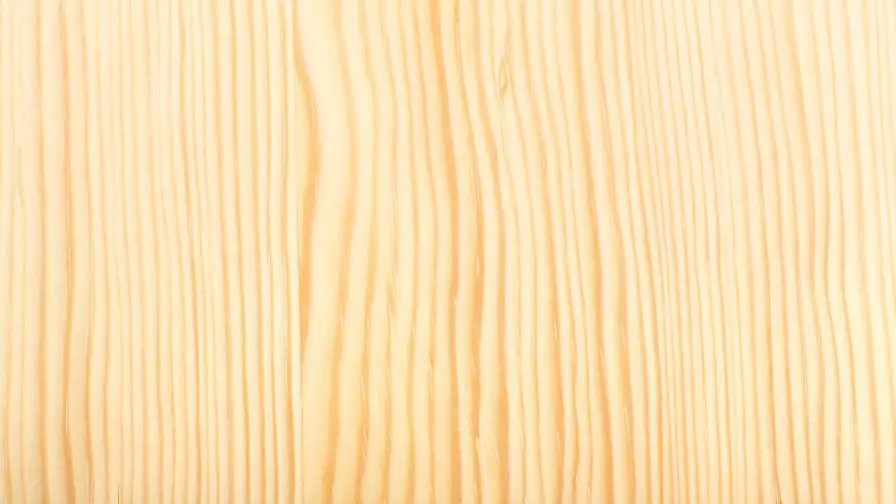
Subscribe to Mean’s Woodshop on YouTube
What Is Whitewood?
Whitewood is a type of wood that comes from the tulip tree. The scientific name for this tree is Liriodendron tulipifera. Whitewood is also sometimes referred to as yellow poplar or tulipwood.
This type of wood is most commonly used for making furniture frames and crates. It is also a popular choice for making pallets and plywoods.
Whitewood is a strong and durable type of wood. It is also an easy wood to work with, which makes it a good choice for beginners.
This type of wood is light in color, ranging from creamy white to pale yellow. It has a fine grain that is straight or slightly spiraled. Whitewood is a relatively soft and easy wood to work with, making it a popular choice for many woodworking projects.
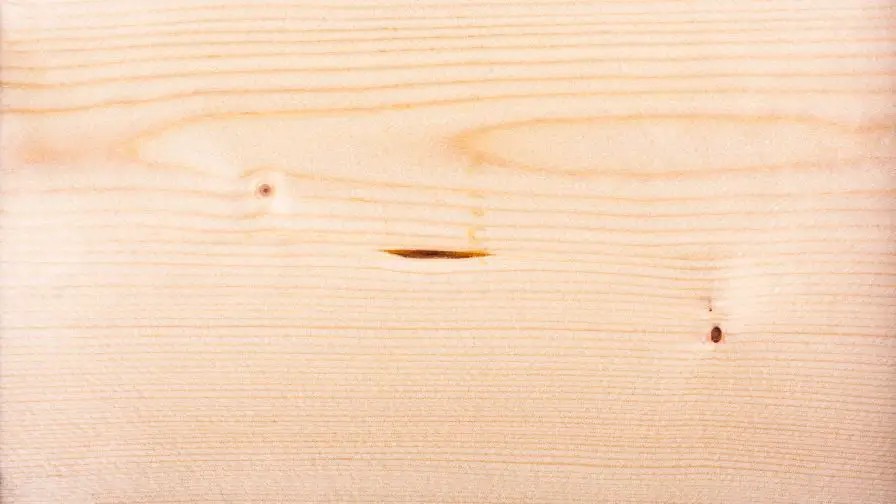
Subscribe to Brainy.Garden on YouTube
Whitewood vs Pine – Price
When it comes to price, whitewood is the clear winner. But what about other factors? It is more affordable than more exotic woods. It is even likely to be less expensive than some domestic species like oaks and hickories.
Pine is more expensive than whitewood, but it is also a much denser wood. This means that it is more durable and will last longer. It is also less likely to warp or crack over time.
So, if you are looking for a wood that is both beautiful and long-lasting, pine is the better choice. However, if the price is your main concern, whitewood is the way to go.
Whitewood vs Pine – Janka Hardness
Various pine species range from 380- 1630. lbf. Whitewood, on the other hand, has a Janka hardness of 540 lbf. This means that most Pine is harder than Whitewood.
Pine is also more resistant to decay and rot than whitewood. Pine is a good choice for outdoor projects where the wood will be exposed to the elements as compared to Whitewood. Whitewood is better suited for indoor projects.
If you’re looking for durable wood for your next project, Pine is the way to go. It’s harder than Whitewood and more resistant to decay and rot. However, if you’re looking for wood to use for an indoor project, Whitewood may be a better choice.
Whitewood vs Pine – Species
Whitewood species is called Liriodendron tulipifera. It is also commonly known as tulip poplar or yellow-poplar. The wood’s color is creamy white with a pale yellow hue. The wood grain is usually straight but can be wavy.
Pine species, on the other hand, have softer woods. There are three primary types of pine used in construction and woodworking. They are white pine, yellow pine, and sugar pine. White pines have a whitish color with a yellow or reddish hue. The grain is usually straight but can be wavy. Yellow pines range from light to dark yellow and have a straight grain. Sugar pines are the largest of the three types of pine and are cream to light brown in color with a straight grain.
Both whitewood and pine are used for a variety of purposes, including furniture, flooring, and cabinetry.
Whitewood vs Pine – Tree Size
When it comes to tree size, Pine has the advantage. Whitewood trees only grow to be about 160 feet tall, while Sugar Pine trees can grow to be a whopping 200 feet tall! So if you’re looking for some serious height, Pine is the way to go.
Subscribe to Canadian Woodworks on YouTube
Whitewood vs Pine – Location
Whitewood is grown in the northern regions of North America while pine is grown in southern regions. This means that whitewood would be a better choice for someone looking to build a deck in Maine while pine would be better for someone in Florida.
Whitewood is also more affordable than pine, making it a great choice for budget-minded homeowners.
Whitewood vs Pine – Color
Color is one of the first things you’ll notice when looking at wood. And when it comes to Whitewood vs Pine, there’s a big difference. Whitewood has a white sap color with a pale green heartwood. Pine, on the other hand, has reddish brown heartwood and yellowish white sapwood.
When it comes to woodworking projects, the color of the wood can be important. If you’re looking for light-colored wood, Whitewood is the better choice. But if you’re looking for a more traditional look, Pine may be the way to go.
Whitewood vs Pine – Grain
In terms of grain, Whitewood is the clear winner. It’s fine grain gives it a smooth surface that is perfect for painting or staining. Pine has straight grain and it has a medium texture. This can give it a more rustic look, but it also makes it more difficult to work with.
So, if you’re looking for an easy wood to work with and has a smooth surface, Whitewood is the better choice. If you’re looking for a more rustic look, then Pine may be the right choice for you.
Whitewood vs Pine – End Grain
Let’s take a look at the end grain of each to find out. Whitewood has small pores and these pores are in no specific arrangement. They’re numerous and mostly solitary. Pine, on the other hand, has medium to large resin canals that are evenly distributed and mostly solitary.
If you’re looking for wood with a medium to large pores, then pine is the better choice. The size of the pores in whitewood makes it a great choice for those looking for a more refined look. Pine, on the other hand, is a great choice for those who want a more rustic look. Whichever you choose, you can’t go wrong – both are beautiful woods.
Whitewood vs Pine – Rot Resistance
Rot resistance is another factor to consider when comparing whitewood to pine. Whitewood is not very durable when it comes to rot, and is also susceptible to insect attack. Pine, on the other hand, has moderate to low decay resistance. This means that it is less likely to succumb to rot or insect damage over time.
So, if you’re looking for a wood that will withstand the elements and last for years to come, Pine is the better option. However, if you don’t mind replacing your deck or fence every few years, whitewood may be a more cost-effective choice.
Best Results for Woodworking with Pine Wood
Subscribe to WoodWorkWeb on YouTube
Whitewood vs Pine – Odor
The odor of the wood especially while being worked on is an important consideration for many people. If you are looking for wood that doesn’t have a strong smell, then whitewood is the better option. However, if you don’t mind the faint smell of pine, then either wood would be fine.
Whitewood vs Pine – Sustainability
As we continue our journey to be more sustainable, it’s important to consider the materials we use in our homes. Wood is a natural resource that can be sustainably managed if proper forestry practices are in place.
Whitewood is not included on the list of threatened species, so it is considered a sustainable resource. Pine is also considered a sustainable resource because it is renewable. When managed properly, forests can provide a never-ending supply of wood.
So, which is the better wood? It depends on your priorities. If you are looking for a wood that is sustainably sourced, then either Whitewood or Pine would be a good choice. If you have a preference for one type of wood over the other, then that should also be considered. Ultimately, the best wood is the one that meets your needs and preferences.
Whitewood vs Pine – Uses
Whitewood is commonly used for construction, furniture-making, and woodworking. It is also used as a material for pallets and crates because of its strength and durability.
Pine, on the other hand, is mostly used for construction purposes such as framing, flooring, and paneling. It is also used to make boats, veneers, and plywood.
So, which one should you use? It really depends on what you need it for. If you need a strong and durable wood for construction purposes, then whitewood is the way to go. But if you need a softer wood that is easy to work with, then pine is the better choice.
Whitewood vs Pine – Related Species
There are a few related species to whitewood that are commonly confused with it.
- White Poplar: The white poplar (Populus alba) grows in southern/central Europe to central Asia and can grow up to 50-75 ft tall.
- Black Poplar: The Black Poplar (Populus nigra) grows in Europe, Western Asia, and Northern Africa. Heartwood tends to be light brown, sapwood is a pale yellow to white and it can grow up to 65-100 ft tall.
- Balsam Poplar: The Balsam Poplar (Populus balsamifera) grows in Canada and the northern United States and it can grow up to 80-100 ft tall.
- Rainbow Poplar: The rainbow poplar (Liriodendron chinense) is native to eastern North America from Southern Ontario. Heartwood is light brown to reddish brown, sapwood is pale yellow to white and it can grow up to 100 ft tall. Pine species related to whitewoods
Here are Pine-related species that you might not have known were in the same family:
- Shortleaf Pine: The shortleaf pine (Pinus echinata) is a native of the southeastern United States. It grows in the Southeastern United States, though also widely grown on plantations. Heartwood is reddish brown, sapwood is yellowish white and it can grow up to 65-100 ft tall.
- Slash Pine: The Slash pine (Pinus elliottii) is a native of the southeastern United States. Heartwood is reddish brown, sapwood is yellowish white and it can grow up to 60-100 ft tall.
- Longleaf Pine: The Longleaf Pine (Pinus palustris) grows in the Southeastern United States, though also widely grown on plantations. Heartwood is reddish brown, sapwood is yellowish white and it can grow up to 100-115 ft tall.
- Sand Pine: The Sand Pine (Pinus clausa) is a native of the Southeastern United States (Florida and coastal Alabama). Heartwood is reddish brown, sapwood is yellowish white and it can grow up to 16-30 ft tall.
- Spruce Pine: The Spruce Pine (Pinus glabra) grows in the Southeastern United States, though also widely grown on plantations. Heartwood is reddish brown, sapwood is yellowish white and it can grow up to 65-100 ft tall.
- Table Mountain Pine: The table mountain pine (Pinus pungens) grows in the Southeastern United States, though also widely grown on plantations. Heartwood is reddish brown.
- Pitch Pine: The Pitch Pine (Pinus rigida) grows in the Northeastern United States, though also widely grown on plantations. Heartwood is reddish brown, sapwood is yellowish white and it can grow up to 50-65 ft tall.
- Caribbean Pine: The Caribbean Pine (Pinus caribaea) grows in Central America and is also grown on plantations worldwide. Heartwood is light reddish/yellowish brown, sapwood is yellowish white and it can grow up to 65-100 ft tall.
- Lodgepole Pine: The Lodgepole Pine (Pinus contorta) grows in Western North America. Heartwood is reddish brown, sapwood is yellowish white and it can grow up to 65-100 ft tall.
- Ponderosa Pine: The Ponderosa Pine (Pinus ponderosa) grows in Western North America. Heartwood is reddish brown, sapwood is yellowish white and it can grow up to 100-165 ft tall.
- Jeffrey Pine: The Jeffrey pine (Pinus jeffreyi) grows in the mountainous regions of southwestern Oregon to California and northern Mexico. Heartwood is reddish brown, sapwood is yellowish white and it can grow up to 100-165 ft tall.
- Jack Pine: The jack pine (Pinus banksiana) grows in Canada and the northern United States. Heartwood is orangish brown, sapwood is yellowish white and it can grow up to 50-80 ft tall.
- Radiata Pine: The radiata pine (Pinus radiata) is native to central and southern coastal California. Heartwood is light brown, sapwood is paler yellowish white and it can grow up to 80-100 ft tall.
- Red Pine: The red pine (Pinus resinosa) grows in the northeastern United States. Heartwood is light reddish brown, sapwood is pale yellow to nearly white and it can grow up to 65-100 ft tall.
- Austrian Pine: The Austrian pine (Pinus nigra) grows in the Mediterranean regions of Europe and Asia Minor. Heartwood is light reddish brown, sapwood is a pale yellow to white and it can grow up to 65-115 ft tall.
- Scots Pine: The Scots pine (Pinus sylvestris) is native to Europe and northern Asia. It is also planted in New Zealand and Northeastern and the Midwestern United States. Heartwood is light reddish brown, sapwood is a pale yellow to white and it can grow up to 65-115 ft tall.
- Pinyon Pine: The pinyon pine (Pinus edulis) grows in the Southwestern United States and northwestern Mexico. Heartwood is yellowish-brown and it can grow up to 30-50 ft tall.
Southern Yellow Pine Boards with The Sawmill Queen
Subscribe to Triple L Rustic Designs on YouTube
Whitewood vs Pine – Pros and Cons
When it comes to choosing wood for your home improvement projects, you have a lot of options. Two of the most popular woods are Whitewood and Pine. So, which is better? Here’s a look at the pros and cons of each type of wood:
Whitewood Pros:
- It’s generally less expensive than pine
- It is an easy wood to work with
- Takes paint and stain well
Whitewood Cons:
- Can be more susceptible to warping and cupping than pine
Pine Pros:
- It is a strong, durable wood
- It resists rot and insect damage well
- Itas a beautiful grain pattern
- It takes paint and stain as well as other woods
Pine Cons:
- It can be more expensive than whitewood
So, which is the better wood? It depends on your needs and preferences. If you’re looking for beautiful wood with a unique grain pattern, Pine may be the better option. However, if you’re working on a tight budget, Whitewood may be the way to go. Whatever you choose, make sure you do your research and pick the wood that’s right for your project.
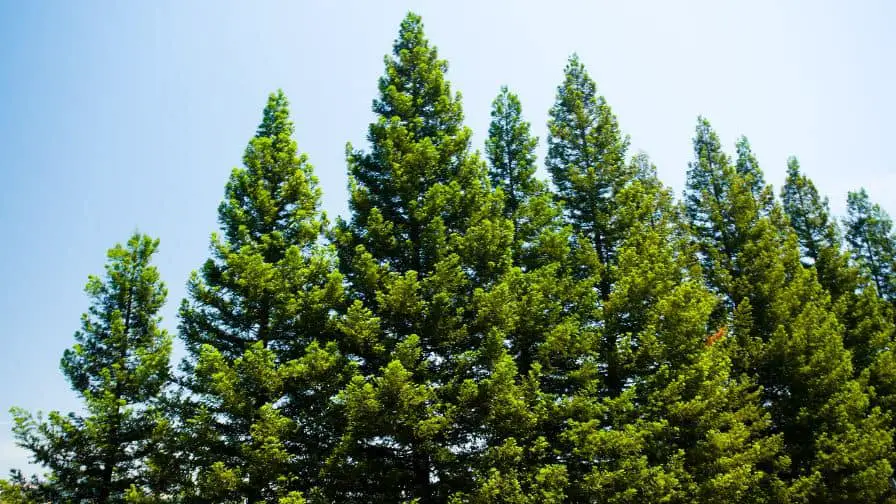
What Are The Differences Between Whitewood vs Pine?
Here’s a quick rundown of the main differences between whitewood and pine:
- Whitewood is a softer wood, while pine is a harder wood.
- Pine is more resistant to rot and decay, while whitewood is more susceptible to these problems.
- Pine is generally more expensive than whitewood.
So, which one should you choose?
If you need strong and durable wood, then pine is the better choice. However, if you’re on a budget, then whitewood may be the way to go.
What Are The Similarities Between Whitewood vs Pine?
Here are the similarities between Whitewood vs Pine:
- Both whitewood and pine are softwoods. This means they’re both easy woods to work with and take nails and screws well.
- They are both light in color, with whitewood being slightly lighter than pine.
- They have a similar grain pattern, which is straight and uniform.
- Finally, they are both affordable woods that are widely available.
These similarities make both kinds of wood good choices for a variety of projects, including furniture, cabinets, and trim work.
Pine wood is best for:
There are many applications where whitewood is the better choice. It’s important to know when to use each wood type to get the most out of your project.
Here are the applications where Pine is best :
- Veneer: Pine is best for veneer because it is an easy wood to work with and takes glue well.
- Plywood: Pine is best for plywood because it is lightweight and with straight grain. It also accepts finishes well.
- Sheathing: Pine is best for sheathing because it resists warping and shrinking.
- Subflooring: Pine is best for subflooring because it is durable and dimensionally stable.
- Boxes: Pine is best for boxes because it is strong and resists crushing.
- Crates: Pine is best for crates because it is sturdy and does not splinter easily.
- Posts/Poles: Pine is best for posts and poles because it is rot resistant and has a high strength-to-weight ratio.
- Interior Trim: Pine is best for interior trim because it takes paint and stain well.
- Cabinetry: Pine is best for cabinetry because it is an inexpensive and easy wood to work with.
- Construction Lumber: Pine is best for construction lumber because it is widely available and has a low cost.
When choosing between whitewood and pine, it is important to consider the application.
Whitewood Is best For:
It is very seldom that whitewood is chosen for its appearance. The wood is usually used for utility purposes because it is soft and not very strong. However, there are some exceptions like the Rainbow Poplar. There are few applications where Whitewood is best suited.
Here are some of the most popular:
- Pallets: Whitewood is often used for pallets because it is soft and an easy wood to work with.
- Crates: Whitewood is also a popular choice for crates because it is strong enough to hold heavy items.
- Upholstered furniture frames: Whitewood is often used for upholstered furniture frames because it is a lightweight and easy wood to work with.
- Paper (Pulpwood): Whitewood is also used for paper because it is soft.
- Plywood: Whitewood is also used for plywood because it is strong and also an easy wood to work with.
Is Whitewood As Strong As Pine?
No, whitewood is not as strong as Pine. It’s about 50% weaker than Pine. But it’s about the same weight.
Pine is the better wood for things like furniture and flooring because it can take more wear and tear. Whitewood is better for things like molding and trim because it’s easier to work with.
If you’re looking for durable wood that is also an easy wood to work with, Whitewood is a good choice. If you need stronger wood for a project, go with Pine.
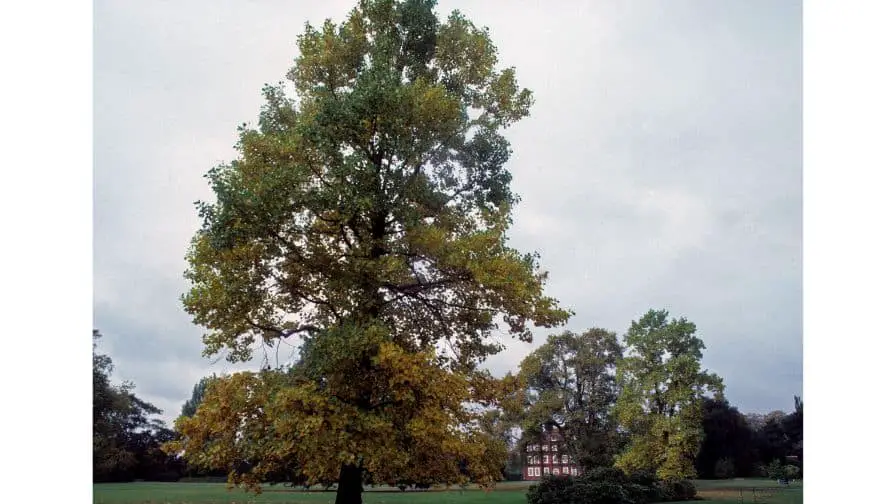
Is Whitewood A Pine Board?
No, a Whitewood board is not the same as a Pine board. Whitewood is a generic term for any wood that is light in color and has few or no knots. Pine, on the other hand, is a specific type of tree with its unique grain pattern.
Which Is Stronger Yellow Pine Or Whitewood?
Yellow pine is the stronger than whitewood. It has a Janka hardness of 690 lbf compared to whitewood’s 540 lbf. This means that yellow pine is better able to withstand impacts and wear and tear. It’s also less likely to warp or deform over time. So if you’re looking for a wood that will stand the test of time, yellow pine is the better choice.
Whitewood Vs Pine For Framing
Whitewood is typically softer than yellow pine, which means it is easier to work with. However, whitewood is also more likely to warp and twist over time.
Yellow Pine is a harder wood, so it is more durable than whitewood. But yellow pine can be difficult to work with because it is so hard.
So, which one should you use for your project? If you need a durable frame that will last for years, then Yellow Pine is the better choice. But if you need a less expensive frame, then whitewood is the better choice.
Whitewood Vs Pine Stain
When it comes to staining your woodworking project, there are a few things you need to take into account.
The first is the type of wood you’re using. Different woods accept stains differently. Pines, for example, are very porous and will absorb a lot of stains very quickly. Others, like Whitewood, have a tighter grain and won’t absorb as much.
The second thing to consider is the type of stain you’re using. Water-based stains are usually very easy to use and don’t require any special preparation. Oil-based stains, on the other hand, can be a bit more tricky. They tend to soak into the wood more deeply, so you need to be careful not to overdo it.
The last thing to think about is the finish you want. If you’re going for a natural look, then an oil-based stain is probably your best bet. But if you want something that’s more durable and can withstand some wear and tear, then a water-based stain is probably a better choice.
So, which is the better wood for your project? It depends on what you’re looking for. If you need something easy to use and gives you a lot of control over the final result, then pine is probably the way to go. But if you want something that’s more durable and has a bit more character, then Whitewood is probably the better choice.
Whitewood Vs Pine For Shelves
If you are working on a tight budget, then Whitewood is the better choice. If you need an easier-to-work-with wood that won’t sag over time, then Pine is the better choice.
Whitewood is a type of hardwood that is strong and durable. It is also relatively inexpensive, making it a popular choice for many homeowners. However, Whitewood can be difficult to work with and is susceptible to warping and cracking.
Pine is also a strong and durable wood that is easier to work with. Pine woods are best to use for shelves because they are less likely to sag over time. However, they are more expensive than Whitewood shelves.



